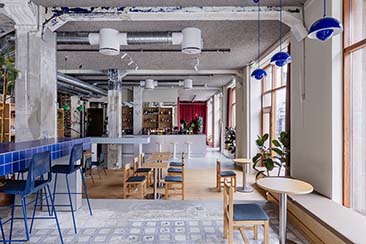At a time when sneakers are acceptable at the office and hoodies appear at high-end galas, you’d think the classic suit would be heading for extinction. Instead, it’s making a quiet but meaningful comeback—not as a dress code requirement, but as a declaration of identity.
In the U.S., suit-wearing today is less about conforming and more about standing out. The sharp lapel, the perfect taper, the unexpected colour inside the jacket—these aren’t just style choices. They’re intentional, personal, and in many cases, deeply emotional.

Identity over uniformity
“When I put on a suit I had designed from scratch, it felt like I was dressing as me, not just a man in a suit,” says Malik Jones, a 34-year-old software engineer from Oakland. “I chose the colour, the stitching, the texture—it wasn’t about impressing others. It was about owning the moment.”
That shift in mindset is reflected in the numbers. Independent tailors and boutique menswear brands report steady growth over the past two years, particularly among first-time buyers. And it’s not just about fashion—it’s about ownership.
Custom suits give wearers a say in every detail, from lapel width to fabric weight. It’s fashion meeting function with personality.
The emotional suit
The renewed interest in tailored wear is also rooted in memory-making. Major life milestones—weddings, anniversaries, promotions—are becoming key moments to commission a custom piece, much like tattoos or heirloom jewellery.
And no event carries more symbolic weight than a wedding.
In years past, most grooms rented a tux or bought a generic off-the-rack navy suit. Now, many see the big day as an opportunity to invest in something they’ll actually wear again—crafted to reflect their story, not just fit the venue.
Wedding suits today are less traditional, more expressive. Think deep forest green, rust-coloured tweed, or silk-lined blazers embroidered with initials or a private message from the partner-to-be.
“I’ve had grooms bring fabric swatches from their fiancée’s dress and ask us to line the inside of their jacket with it,” says Ana Delgado, a tailor based in Austin. “It’s become this wearable love letter.”

Shifting gender norms and style fluidity
Perhaps most interestingly, suits are also being reclaimed across gender lines. Women and non-binary individuals are increasingly turning to custom tailoring for wedding attire or formal events, not as a protest against dresses, but as a way to feel fully themselves.
Major designers and indie shops alike have started offering gender-neutral tailoring and inclusive cuts, removing the dated boundaries of “men’s” and “women’s” suiting.
A well-made suit now means empowerment, not conformity. It frames the body the way the wearer wants to be seen—sharp, soft, bold, classic, or anything in between.
More than just fashion
This evolution of the suit isn’t just about trends—it’s about control in an unpredictable world. Amid a culture that’s increasingly digital, fast-moving, and impersonal, commissioning something built for your body, your values, and your moment feels grounding.
As consumers push back against fast fashion, the suit—a symbol of slow, deliberate craft—finds new life as both a style statement and a form of resistance.
Because in 2025, wearing a suit isn’t about fitting in. It’s about showing up, fully yourself.








